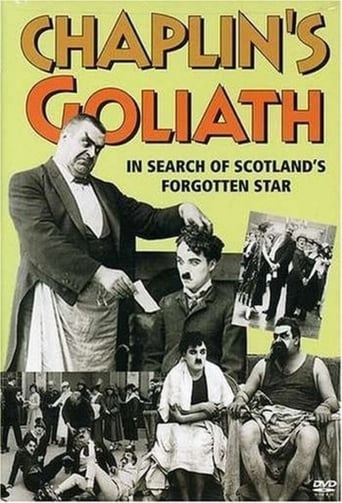

Eric Campbell is a footnote in the history of Hollywood as well as slapstick comedies. This is meant as no insult. He only made 11 films with Charlie Chaplin as his large and angry nemesis and died at the height of his fame....and it's not surprising that today practically no one has heard of him. Additionally, while this documentary doesn't mention him, Campbell's role was supplanted by Mack Swain after Campbell's death and most Chaplin lovers today remember this rotund American instead of the Scottish Campbell. This is no insult...just facts. But these facts also make this documentary about Campbell a bit problematic. His career was short and he's been dead 99 years. So what more can you say about the guy?!While this film is reasonably well made, it is DEFINITELY a niche documentary. People who don't love Chaplin will likely be bored or unimpressed and it's clearly for his fans and fans of slapstick in general. Worth seeing...at least for the initiated. The fact that it's recently come to Netflix is a bit of a surprise, though I am happy as I am a HUGE fan of the silent comedies.
... View MoreEric Campbell was Chaplin's nemesis in eleven of the twelve films Charles Chaplin made for Mutual in 1916 and 1917. This short documentary film traces Campbell's life from Dunoon, Scotland to the world's silent stage as Chaplin's chief villain in his films from this period. Campbell shook off typical expectations for young men of his background to become one of the recognizable film comedians of his time. He knew both Charles Chaplin and Stan Laurel in Fred Karno's musical hall acting troupe in England. He was an early portrayer of the "slow burn" and demonstrators of the difference in size as being humorous. Tragically, however, Campbell's life was filled with tragedy, and his young wife died followed by an auto accident with his daughter. Campbell then remarried quickly only to be divorced months later and die himself in a tragic auto accident. His granddaughter provides insight from letters of the period. In the end, the burial story of Campbell's remains serves as a timeless metaphor for all forgotten performers of the past. *** of 4 stars.
... View MoreIn the course of just the first few films with Chaplin, easily the biggest film star in the world, Eric Campbell himself became famous. Recall the scene where The Tramp literally gaslights Campbell in Easy Street? It's still one of the funniest and most memorable sequences in screen history. His thick, animalistic eyebrows, and patented slow burn, soon inspired imitators of himself (Oliver Hardy was one of them), just as Chaplin inspired imitators- one of them ironically being Stan Laurel, who knew Campbell and Chaplin from their days with Karno. So, flush with cash, Campbell brought his wife and daughter to Hollywood. Then, in an all too Hollywood fashion, disaster struck. Campbell's wife died suddenly, his daughter was in an accident, Campbell remarried a golddigger a month after his first wife's death, then divorced her two months later, and then himself died in an early morning drunken driving accident, in December of 1917. Chaplin never again had such a great on screen foe and partner, and never again was The Tramp so delightfully wicked, which led to the detractors of Chaplin's success and greatness arming themselves with his perceived flaws, and conveniently ignoring the brilliance of his anarchic Essanay and Mutual days. The documentary does dig up many outtakes from Chaplin films, and the on screen and offscreen chemistry between the two men is palpable. There are many archival documents, from Campbell's childhood in Dunoon, Scotland (although his exact date of birth is unknown- anywhere from 1878-1885, and his full name was Alfred Eric Campbell) to Campbell's second wife's hilarious petition for divorce, claiming cruelty that includes exposure to hula dancing. There are the requisite experts, such as Campbell's daughter, and Chaplin expert David Robinson. But, the best thing about the film is nothing within the film, but simply that it exists. The best thing about the prevalence of DVDs is that they provide an affordable way to preserve the history of the dominant art form of the Twentieth Century, and its oft-forgotten contributors- major and minor.
... View More